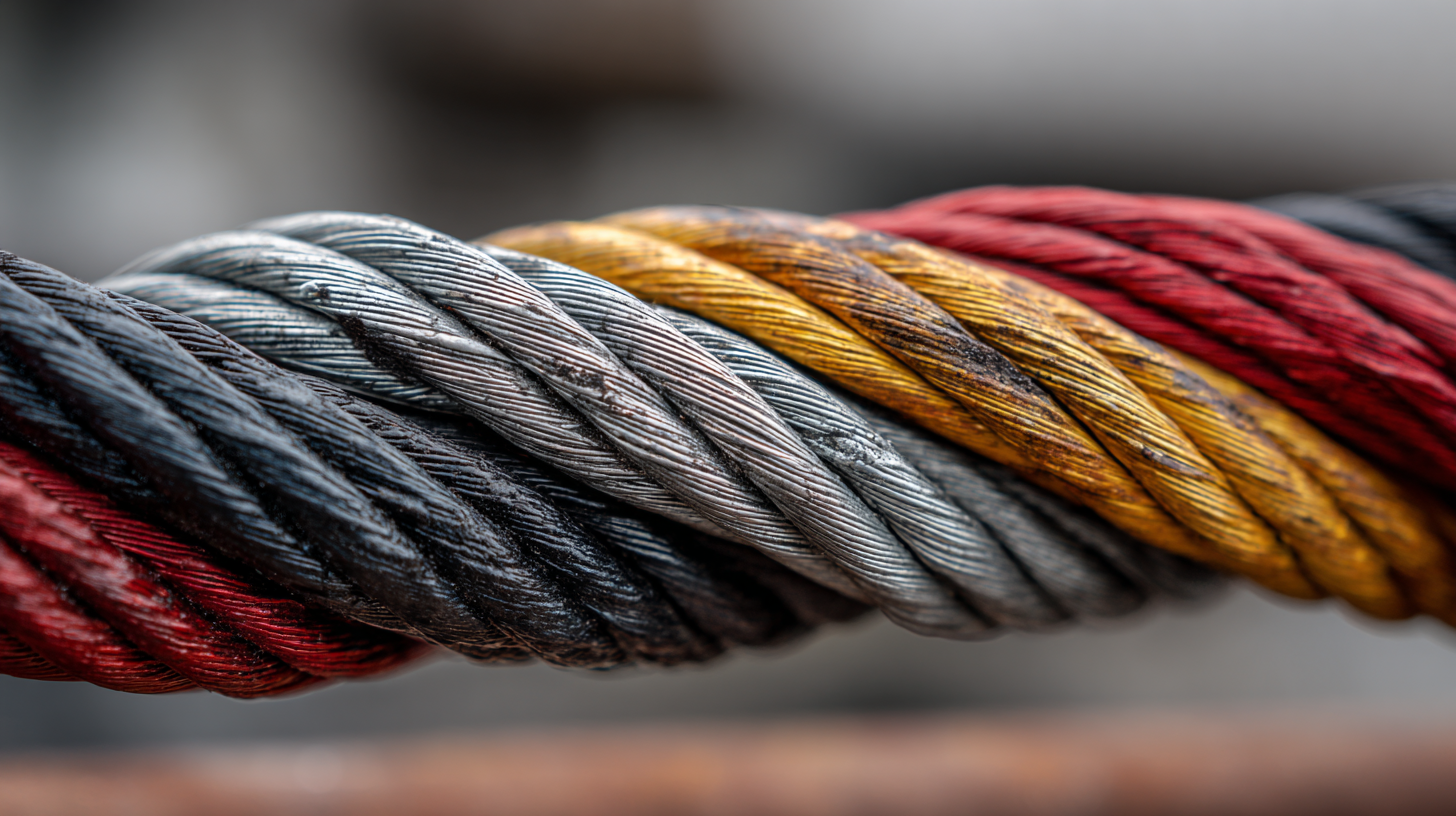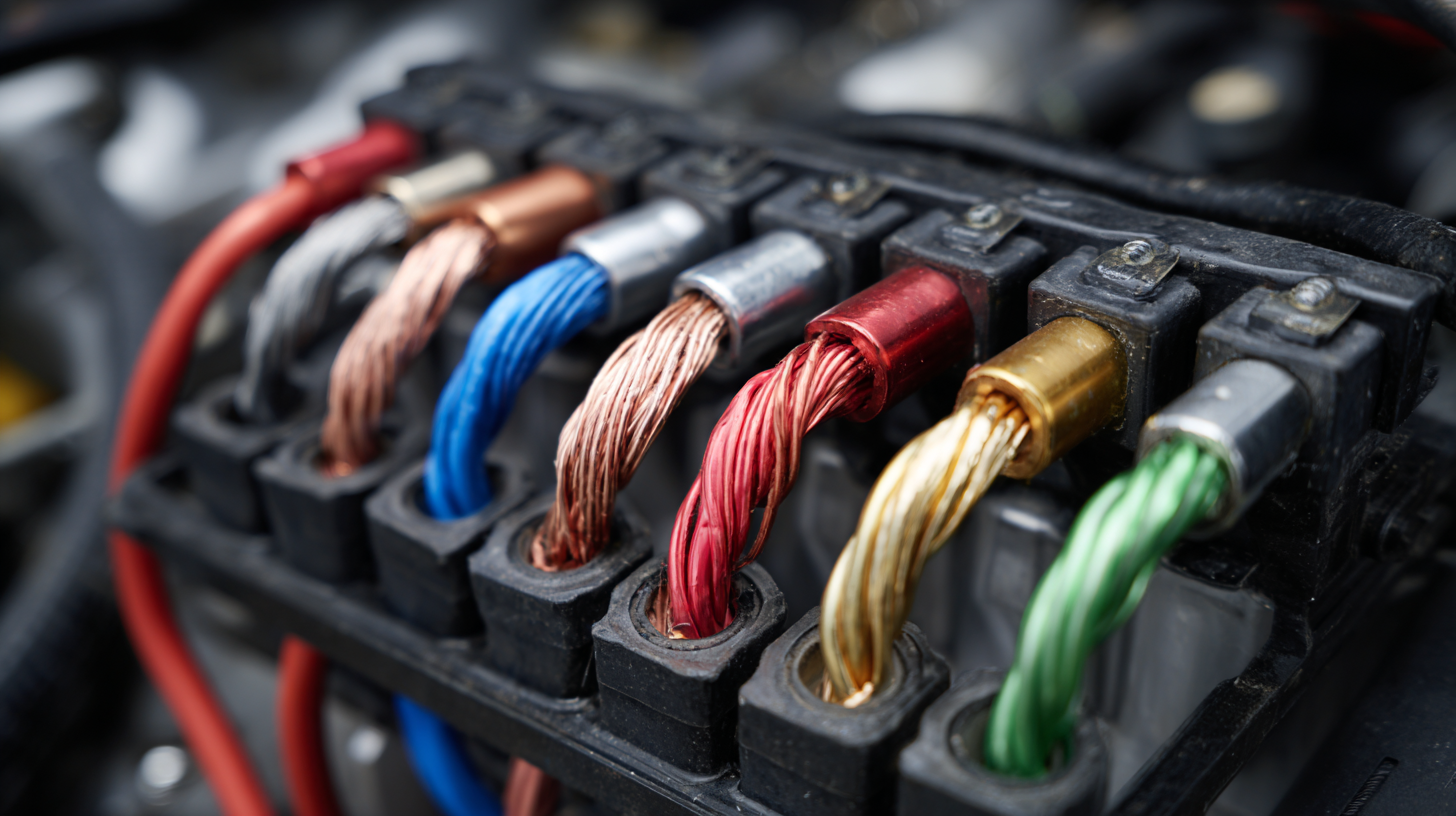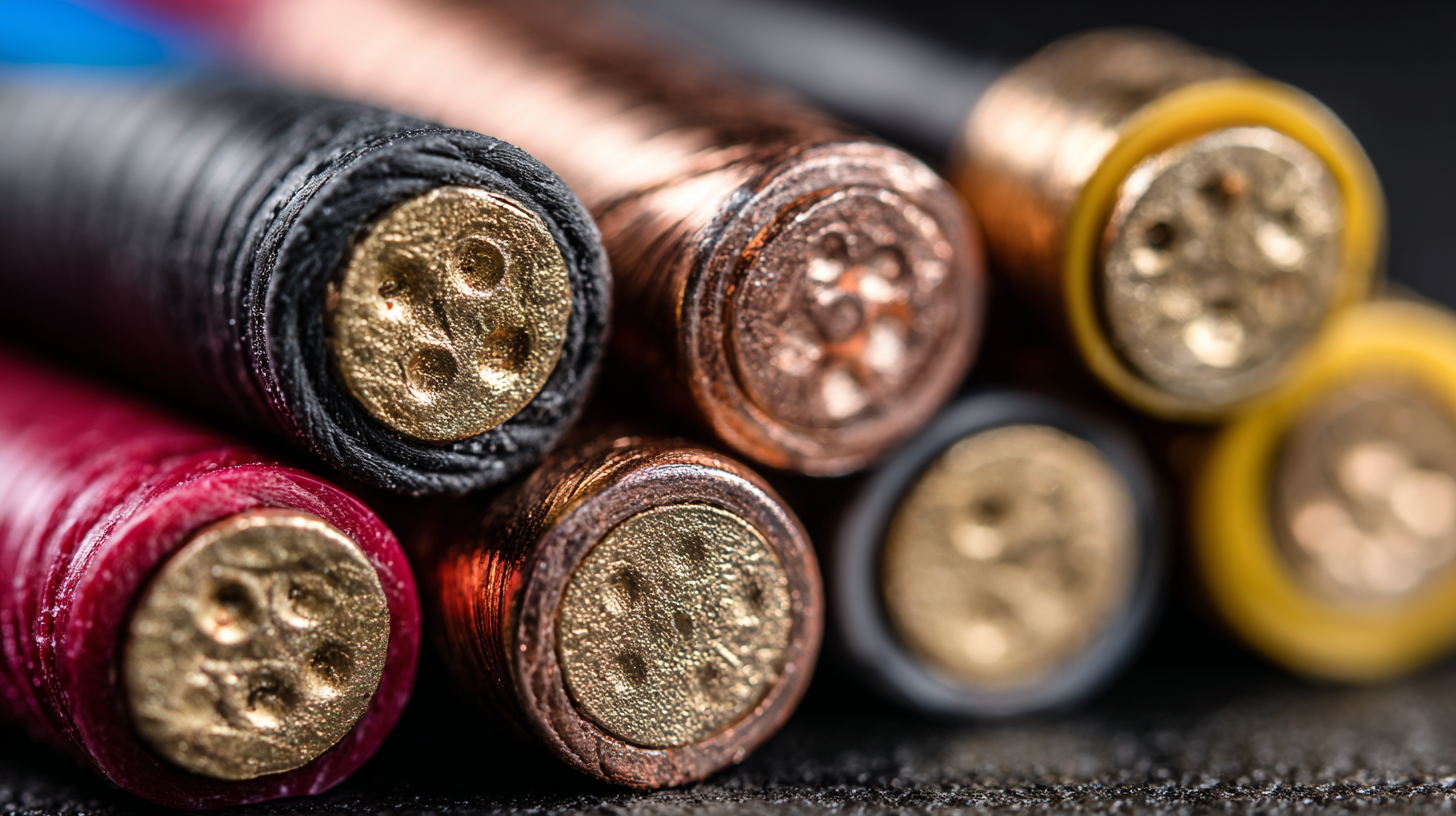Discover the Top Alternatives to Best Battery Cable Wire for Your Global Sourcing Needs
In today's rapidly evolving global market, sourcing high-quality components like Battery Cable Wire is crucial for manufacturers striving for excellence. According to a recent report by MarketsandMarkets, the global battery cable market is projected to reach USD 1.5 billion by 2025, influenced by the rising demand for electric vehicles and renewable energy systems. As industries increasingly prioritize sustainability and efficiency, the importance of reliable sourcing alternatives cannot be overstated.

Chinese manufacturers have emerged as key players, providing exceptional quality and cost-effective solutions. However, businesses must be aware of the diverse options available worldwide, as selecting the right Battery Cable Wire can significantly impact performance and compliance in various applications. This blog explores the top alternatives to the best Battery Cable Wire, ensuring that global sourcing needs are efficiently met while maintaining superior standards.
Understanding Industry Standards for Battery Cable Wire Production
When it comes to sourcing battery cable wire, understanding industry standards is crucial for ensuring product quality and compliance. The International Electrotechnical Commission (IEC) and the American Society for Testing and Materials (ASTM) set vital benchmarks regarding the specifications and performance of battery cables. For instance, ASTM B3 outlines the requirements for bare copper wire, which is essential for efficient current transmission in automotive and industrial applications. Companies adhering to these standards can benefit from increased reliability and safety in their products.
Recent market analyses indicate a growing trend in the demand for high-quality battery cables due to the surge in electric vehicles (EVs) and renewable energy systems. According to a report from MarketsandMarkets, the global battery cable wire market is expected to reach a value of USD 9.35 billion by 2024, growing at a CAGR of 7.4%. This growth is driven by the rising need for efficient and durable electrical connections, which are critical in high-performance applications. By complying with established industry standards, manufacturers not only enhance their product offerings but also position themselves competitively in a rapidly evolving market.
Key Considerations When Sourcing Battery Cable Alternatives Globally
When sourcing battery cable alternatives globally, several key considerations must be taken into account to ensure the product meets both performance and compliance standards. According to a report from the International Electrotechnical Commission (IEC), the global demand for high-quality battery cables is projected to increase by 6.4% annually through 2025. This highlights the growing need for sourcing alternatives that do not compromise on quality.
One critical aspect is the cable's conductivity and insulation properties. Selecting materials such as copper or aluminum can significantly affect performance, with copper typically providing better conductivity. It’s essential to verify that the cables meet industry standards, such as UL and IEC certifications, to guarantee safety and reliability in various applications.
**Tips:** Always request data sheets from manufacturers to compare specifications and confirm compliance with relevant standards. Additionally, consider working with suppliers who have a robust quality assurance process. Engaging in regular audits can also help ensure that the products sourced meet your requirements consistently.

Comparative Analysis of Material Types for Battery Cable Wires
When sourcing battery cable wires, understanding the various material types is crucial for optimal performance and reliability. Copper and aluminum are the two most common materials, each offering distinct advantages. Copper, known for its superior conductivity, boasts a conductivity rating of 58 MS/m, significantly higher than aluminum's 37 MS/m. This makes copper a preferred choice for high-performance applications, especially where lower resistance and heat generation are desired.
On the other hand, aluminum cables are gaining traction due to their lightweight and cost-effectiveness. According to a report by Smithers Pira, the global market for aluminum wire is projected to reach $2.4 billion by 2025, driven by rising demand in automotive and renewable energy sectors. While aluminum cables require larger diameters to match the conductivity of copper, advancements in alloy technology are improving their performance, making them a competitive alternative for budget-conscious sourcing.
Consideration of insulation materials is also essential. PVC and cross-linked polyethylene (XLPE) are the most frequently used insulators. PVC is cheaper and provides adequate protection for moderate applications, while XLPE offers better thermal resistance and mechanical strength, suitable for high-temperature environments. According to a recent analysis by Allied Market Research, the global market for insulated wire and cable is expected to grow at a CAGR of 4.9% from 2021 to 2028, reflecting the ongoing innovations in insulation technologies that enhance the safety and durability of battery cable wires.
Evaluating Performance and Durability of Alternative Options
When considering alternatives to the best battery cable wire for global sourcing needs, evaluating performance and durability is essential. Alternative materials can sometimes match or even exceed traditional battery cables in terms of conductivity and corrosion resistance. For instance, consider using tinned copper or aluminum alloys, which can provide impressive conductivity while being lighter and more resistant to oxidation. This is crucial in applications where cables are exposed to harsh environments.
When choosing alternative battery cables, here are a few tips to keep in mind. First, ensure that the alternative material meets relevant industry standards, which will guarantee reliability and safety in your applications. Second, assess the temperature rating of the cables to ensure they can withstand extreme conditions. Finally, always compare warranty offerings from different manufacturers; a robust warranty often indicates a higher level of confidence in the durability of the product.
By closely evaluating these factors, sourcing the right battery cable alternatives can lead to better performance and longevity, potentially saving costs while maintaining product quality. Additionally, being well-informed about the various options will empower sourcing decisions and optimize supply chain management.
Top Suppliers for Quality Battery Cable Wire Alternatives in the Market
In the competitive landscape of battery cable wire sourcing, finding reliable alternatives can be crucial for manufacturers. According to a recent industry report by Statista, the global battery cable market is projected to reach USD 4.3 billion by 2025. As companies seek to optimize their supply chains, exploring top suppliers of quality alternatives becomes essential.
 Leading suppliers like Amphenol and TE Connectivity are known for their robust product offerings, providing high-performance battery cables that meet industry standards for durability and conductivity. Their products are engineered to withstand extreme conditions, ensuring reliable performance in automotive, marine, and industrial applications. A market analysis from Mordor Intelligence highlights that the demand for copper and aluminum-based cables is expected to grow due to their excellent electrical conductivity and mechanical strength, further emphasizing the importance of sourcing from qualified suppliers.
Leading suppliers like Amphenol and TE Connectivity are known for their robust product offerings, providing high-performance battery cables that meet industry standards for durability and conductivity. Their products are engineered to withstand extreme conditions, ensuring reliable performance in automotive, marine, and industrial applications. A market analysis from Mordor Intelligence highlights that the demand for copper and aluminum-based cables is expected to grow due to their excellent electrical conductivity and mechanical strength, further emphasizing the importance of sourcing from qualified suppliers.
Additionally, companies such as Southwire and General Cable have emerged as key players, offering innovative solutions that incorporate advanced materials and manufacturing processes. These suppliers not only enhance efficiency and safety but also align with sustainability practices by focusing on recyclable materials. As the global demand for renewable energy solutions rises, it’s crucial to consider these top suppliers for quality battery cable wire alternatives to enhance your operational capabilities.
